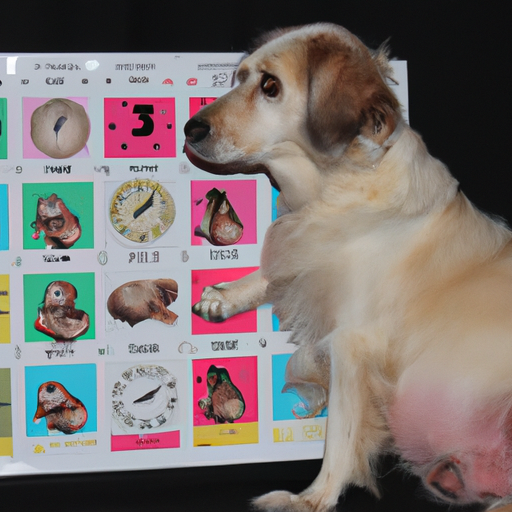Understanding the Dog’s Reproductive Cycle
As a loving and caring pet owner, understanding your dog’s reproductive cycle is essential. In the world of dogs, the term for pregnancy is “gestation.” Typically, the gestation period in dogs lasts approximately 63 days, or about nine weeks. However, this can vary slightly depending on numerous factors, including the dog’s breed and health condition.
- Proestrus: The initial phase, known as proestrus, lasts about nine days. During this time, you’ll notice your female dog showing signs of being in heat, such as a swollen vulva and bleeding.
- Estrus: The next phase is estrus, which can last anywhere from three to 21 days. This is when your dog is receptive to males and can get pregnant.
- Diestrus: Diestrus is the post-heat phase, which lasts about two months if your dog is pregnant. If not, this phase will transition back into anestrus.
- Anestrus: This is the resting phase, lasting about six months before the cycle starts anew.
Understanding these stages can help you better anticipate and prepare for your dog’s pregnancy.
Recognizing Pregnancy in Dogs
It’s not always easy to tell if your dog is pregnant in the early stages. Some signs may include:
- Appetite changes
- Weight gain
- Increased urination
- Nesting behavior
- Enlarged nipples
If you suspect your dog might be pregnant, a visit to the vet is always a good idea. They can perform an ultrasound or X-ray to confirm the pregnancy.
Caring for a Pregnant Dog
Taking care of a pregnant dog requires knowledge, patience, and a lot of love. Here are some tips to help:
- Nutrition: A balanced diet is crucial. Increase her food gradually as the pregnancy progresses, and consider switching to a high-quality puppy food later in the pregnancy.
- Exercise: Regular, gentle exercise is good, but avoid strenuous activities.
- Vet visits: Regular check-ups can help ensure a healthy pregnancy.
Preparing for the Birth
As your dog’s due date approaches, you’ll need to prepare for the birth:
- Prepare a whelping box: This is a comfortable, safe place for your dog to give birth.
- Know the signs of labor: Restlessness, panting, decreased appetite, and temperature drop are indicators that labor is near.
- Have an emergency plan: If anything goes wrong, know your vet’s emergency number and the quickest route to the clinic.
After the Birth
Once the puppies are born, both mother and puppies will need ongoing care. The mother will need plenty of food and water, and a quiet, comfortable place to rest with her puppies. The puppies will need to nurse frequently, and will begin to open their eyes after about two weeks. At around four weeks, you can begin to introduce them to solid food.
Frequently Asked Questions
1. Can gestation periods vary among different dog breeds?
Yes, gestation periods can vary slightly. Smaller breeds may give birth a few days earlier, while larger breeds might be pregnant a bit longer.
2. How many puppies can a dog have?
This varies greatly depending on the breed and size of the dog. Some may have just one or two puppies, while others can have ten or more!
3. When should a pregnant dog see the vet?
Ideally, as soon as you suspect she’s pregnant. Regular check-ups throughout the pregnancy are important.
4. How can I tell if my dog is in labor?
Signs of labor can include restlessness, panting, and a drop in body temperature. When in doubt, consult your vet.
5. How soon can puppies leave their mother?
Puppies should stay with their mother until at least eight weeks of age. This gives them time to learn important social skills from their mother and siblings.



